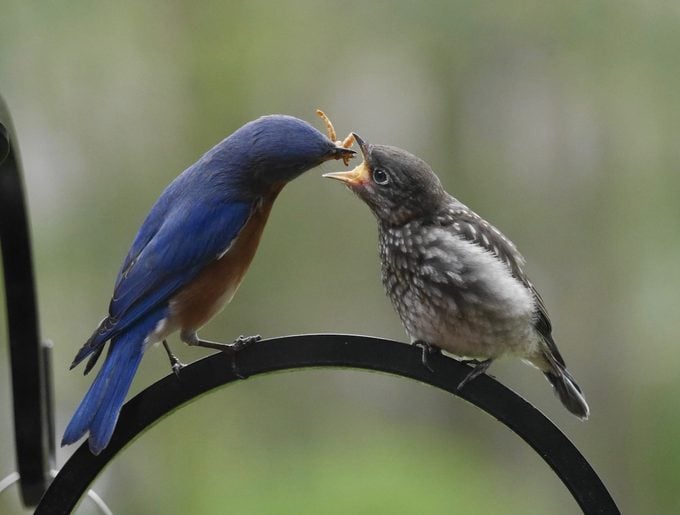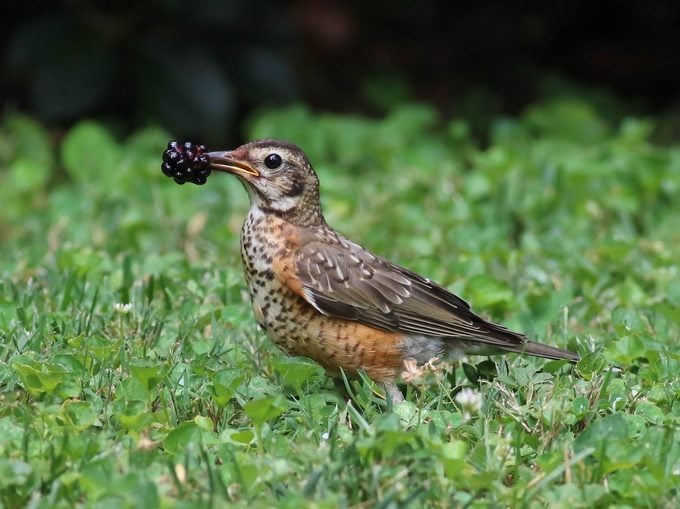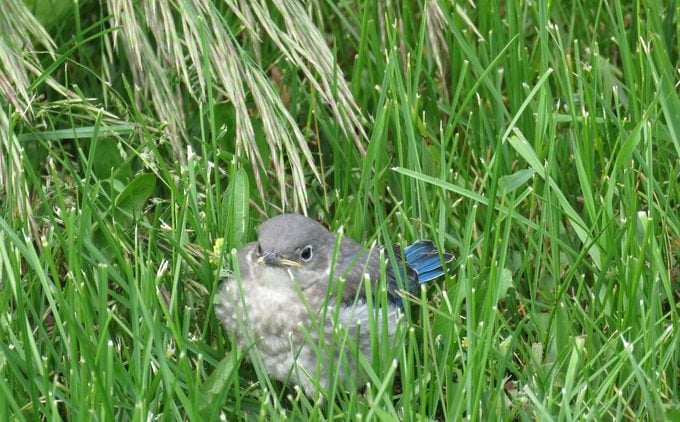What Foods Do Baby Birds Eat?
Updated: Aug. 25, 2022
The spring and summer nesting season brings many baby birds to the backyard. Find out what baby birds eat and how they learn to find food.
What Do Baby Birds Eat?

If you watch birds in your backyard in spring and summer, you’re likely to encounter bird mothers and dads feeding their babies. What foods do baby birds eat? It depends on the type of bird.
Some species’ chicks hatch out of the egg with the instinct to find their own food. Young sandpipers and ducklings will start pecking at tiny insects within hours of hatching. Baby quail run after their parents, who show them how to nibble on insects and seeds, and soon the hatchlings begin to find food for themselves.
Discover which birds eat insects, including mosquitoes, butterflies and bees.
But birds that hatch naked sit in the nest and wait for their parents to bring them food. For most songbird nestlings, the diet consists mainly of protein-rich insects, even if the adults tend to be seed-eaters for much of the year. Cedar waxwings bring insects to their young for the first two days, but then start bringing a variety of fruits. American goldfinch babies get a diet of mashed-up seeds. Baby hummingbirds eat a slurry of regurgitated nectar and small insects.
A pair of American robins feeding a hungry family of babies will deliver 100 to 150 meals a day to the nest. Each baby robin may eat its weight in insects, worms and berries every day.
Learn how long baby birds stay in the nest.
How Do Baby Birds Learn to Find Food?

Life is tough for young birds when they’re first apart from their parents. They have to figure out how to find enough food to keep their strength up, while learning how to recognize predators and other potential dangers. If they can survive their first few weeks of independence, however, they have a good chance of living a normal life span.
After young birds leave the nest they may watch how their parents search for food, but mostly they will learn by trial and error, with instinct sharpened by practice.
Support young birds wherever you live by providing native plants, keeping cats indoors and avoiding pesticides to make your yard bird friendly. In return, you’ll get the excitement of watching young birds as they grow up and explore their world.
What is a fledgling? See the stages of a baby bird’s life.
Should You Rescue or Feed a Baby Bird?

A young bird out of its nest may look like it needs help, but it’s best to back off and observe from a distance. More often than not, the parent birds are nearby. They continue to feed the youngster while it’s on the ground, and if given enough space, lead it to safety.
Of course, if the fledgling is in immediate danger—in traffic or threatened by prowling pets—move the bird to a safer spot. It is a myth that bird parents will reject a young bird if you touch it. The young bird can be placed back in its nest or in the safety of a nearby shrub. Can you move a bird nest?
If a baby bird appears to be injured, contact a local rescue organization or registered wildlife rehabilitator. It is illegal to raise a wild baby bird.
Next, check out super cute pictures of baby birds you need to see.




















